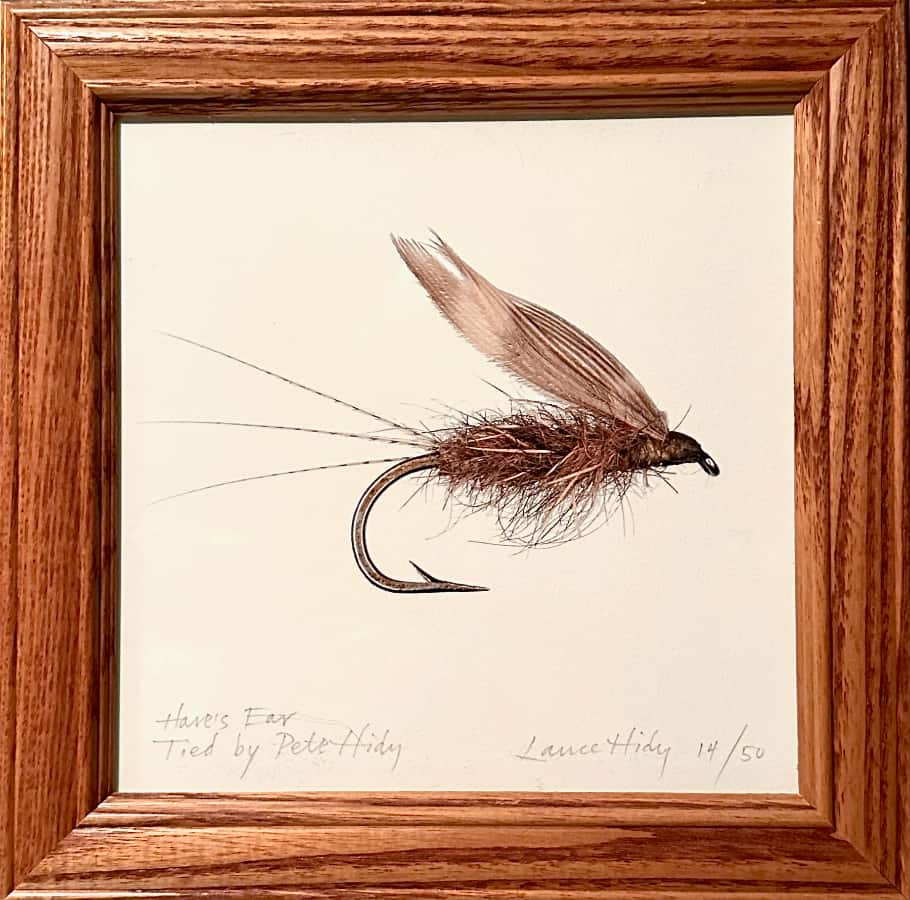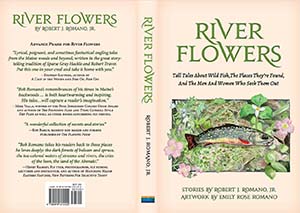What Was Old is New Again: Fishing With Wet Flies

I’ve always enjoyed history, knowing we are a part of something extending beyond the here and now, one of the reasons I’ve gravitated toward fly fishing, intrigued with an endeavor dating back through the centuries. This morning, I’ve pulled one of my favorite flies from a bit of rippled foam glued to the inside of a tin holding a half-dozen wet flies. The little wisp of fur-and-feather is a pattern first tied back to the 1800s.
You can trace the history of wet flies by reading books written on the subject. Most are readily available at modest cost. Of course, you can learn about fishing with wet flies by surfing the Internet. There are whole sites dedicated to the subject, such as the International Brotherhood of the Flymph, but reading books first published more than a century ago is akin to going back in a time machine. It’s like sitting beside the authors, sharing their frustrations and joys while they explain how they solved the same puzzles we face when on our favorite river, stream, or brook.
In 1857, W.C. Stewart wrote a book addressing the use of wet flies in waters similar to those found here in western Maine. In The Practical Angler, Stewart wrote about the small, but rough Scottish rills where he cast upstream, fishing his flies without drag, advocating the use of a pattern he called a “spider,” one he tied with a silk body and a wrap or two of soft hackle.
Thomas Evan Pritt followed Stewart with his book, North Country Flies, published in 1885. Pritt catalogued the wet flies used in the fast flowing, turbulent rivers along the English-Welsh border.
In 1916, Harfield H. Edmunds and Norman N. Lee added to the wet-fly literature their Brook and River Trouting: A Manuel of Modern North Country Methods.
This trio of books espouses the use of soft-hackled wet flies on water similar to the rough-and-tumble stream sweeping beside the bank where I now cast my fly. Watching the sparsely-tied hackle undulate as the little pattern sinks through the tannin-stained current, I’m reminded of the controversy that sprung up between advocates of the dry fly and those preferring the type knotted to my tippet.
By the early 1900’s the dry fly had become king on southern England’s chalk streams, with Fredric Halford perfecting his theories on casting upstream to the suspicious brown trout residing in those quiet waters. That was until 1910, when G.E.M. Skues published his now classic work, Minor Tactics of the Chalk Stream. Skues set down his heretical belief that subsurface flies could be fished for finicky trout in the same manner as dry flies. In his later books, the contrarian author espoused sight casting to rising trout using nymphs matching those of the natural insects under the surface of the stream, an excellent technique I often employ during those times when western Maine’s native brook trout are looking to the surface for a meal.

Bob Romano’s newest book River Flowers is available now. Visit forgottentrout.com for ordering information.
In Britain, the controversy raged between the two schools of thought while in the States we remained content to cast gaudy wet flies to our native char such as the nine-inch speckled beauty I now hold in my moist palm.
With industrialization came the near demise of our natural fishery, resulting in the introduction of the brown trout to American waters. With the selective brown came the use of dry flies, our fixed-winged, wet-fly patterns falling out of fashion. It wasn’t until 1941 when James Leisenring and his young friend, Pete Hidy coauthored The Art of Tying the Wet Fly that on this side of the Atlantic we had a manual of sorts for casting wet flies. Leisenring used silk for his bodies and wisps of soft hackle for his wings, returning to the North Country flies for his inspiration.
Big Jim, as the expert tool maker from Pennsylvania was known by his friends, fished shallow runs allowing his wet flies to sink to the bottom where they could go “bumpty-bump over the gravel and stone” until he lifted the tip of his rod in front of a targeted trout. He theorized that this action we now call the “Leisenring Lift” caused his imitations to rise from the bottom of the stream like a natural caddis or mayfly nymph. In a tiny book published in 1961 by Sports Illustrated magazine, Pete Hidy referred to his “Subsurface Swing,” which was similar to the above technique, except that the fly is worked in the surface film rather than off the bottom, making it useful in deeper runs.
Both Leisenring and Hidy used only natural material to create the bodies of their wet flies. They felt the natural material was better suited to trap air bubbles, which when released, closely resembled what occurs when caddis rise from the stream bottom, while the strands of soft hackle matched the segmented legs of most any aquatic insect.
World War II muted any effect these two men might have had on fishing with wet flies, but in 1965 Polly Rosborough advanced methods for the use of nymphs to fool large trout feeding just below the surface. In his book, Tying and Fishing the Fuzzy Nymphs, Rosborough espoused using the traditional wet-fly swing. While avoiding drag, he placed his nymphs in front of a feeding trout, using the rod to work the fly in an effort to coax the fish to strike.
But it wasn’t until the nineteen-seventies that the wet fly became accepted by this country’s fly-fishing’s Intelligentsia. That’s when Sylvester Nemes wrote The Soft-Hacked Fly. In the ensuing two decades, Nemes added two more books on the subject, forming his trilogy on wet-fly fishing and making him a permanent fixture in fly-fishing history. These three books will fully acquaint the angler with the wet-fly tradition, its flies, and the various methods used to effectively fish them.
Since then, our knowledge of wet-flies has been expanded with a number of modern texts. Mike Harding’s book, North Country Flies, first published in 2009 by Aurum Press Ltd, provides the recipe and history of most soft-hackle wet-fly patterns, including a close-up photograph of each, while Mike Valla’s The Classic Wet Fly Box published in 2012 by Whitefish Press does the same for fixed-winged wet flies. Although lacking color plates, another useful book to understanding the history and technique of fishing with a wet fly is Terry Lawton’s The Upstream Wet Fly, published by Hale in 2011.
However, if you’re looking for only one book to read, you may wish to consider Dave Hughes’s Wet Flies. First published by Stackpole Books in 1995, this simply-titled book was updated in 2015. The second edition provides a wealth of information in an easily understood style of writing. Hughes begins by providing the history of the wet fly. He proceeds to describe how to tie the different patterns, with separate chapters on soft-hackled wet flies, flymphs, fixed-winged patterns, and fuzzy nymphs. He then moves on to chapters on the various methods for fishing these flies, providing insights from many of the authors referred to in this article.
So, before you swing a Gold-ribbed Hare’s Ear through the current or sight cast a Partridge and Green to a feeding trout, consider reading up on your fly’s history. You may discover what was old has a way of becoming new again. Me? I’ve set my fly rod against a birch tree and settled down on this moss-covered boulder for a little nap now that I’ve figured out what to write for my July column of Northwoods Journal.











